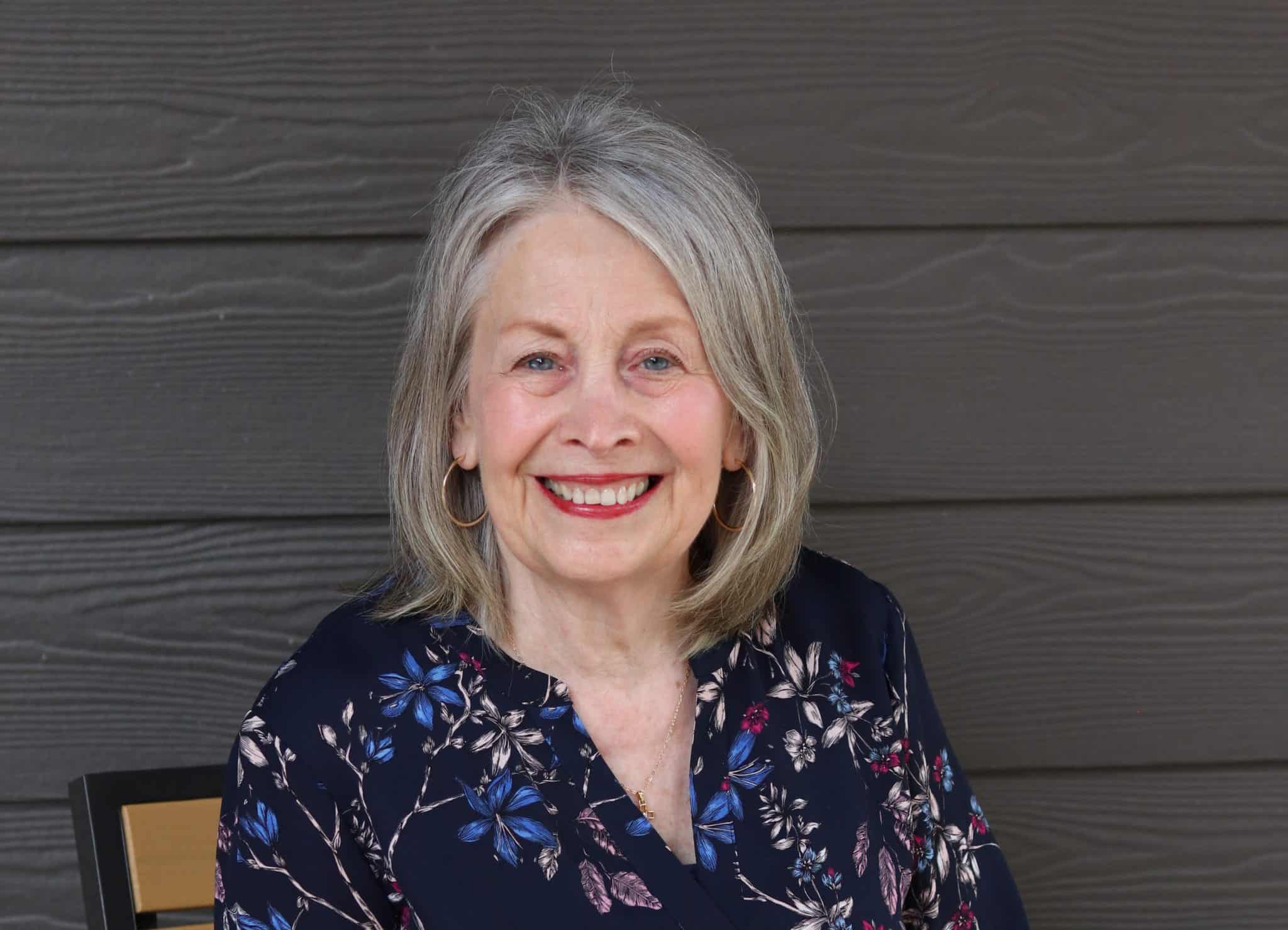View Larger Image

Frances Sego
Image by Brooks Sego
Special Lenses Help Former Gallery Owner See Color Again
| When Frances Sego, of Fayetteville, puts in the special contact lenses she got through seeking care at the UAMS Harvey & Bernice Jones Eye Institute, “it’s like putting a new lightbulb in your eye each morning.”
Plagued by complications resulting from corneal dystrophy, which causes irregularities to the clear outer layer of the eye, her vision had been slowly growing worse over the last three decades. As co-owner of a gallery featuring wildlife art, she noticed the colors were slowly fading to gray.
“When you don’t see colors in that business, it makes things very difficult,” said Sego. “My husband and I were blessed in that we were reaching the age of retirement at that time and able to sell the business. I didn’t try to get it done before that because I didn’t know what the recovery time would be. There were just a lot of questions.”
Answers to those questions started coming in 2014 when she was referred to David Warner, M.D., an ophthalmologist with the UAMS Jones Eye Institute.
“Her situation was a little unique, because the cloudy part of the cornea was just located anteriorly,” said Warner. “She didn’t need a full thickness transplant in one eye, so only a partial thickness of the cornea was replaced. The other eye received a full thickness transplant.”
While having corneal transplants in both eyes was only the beginning of the journey to better vision, Sego said she could not have asked for a better guide.
“Dr. Warner was super throughout the whole process. He joked that he’d gone through the Eye Bank and picked out the perfect corneas off the shelf just for me,” Sego said. “He took the extra time to explain exactly the techniques he intended to use and what to expect, as well as what could go wrong.
“You have to accept some risk when you’re having any surgery, but when it’s your eye, it can be very unnerving. You trust the Lord and pray a lot,” Sego said. “But Dr. Warner was very good at communicating everything to me.”
After surgery, healing was slow and there was double vision in her left eye. She was prepared for that possibility, but healing her cornea required another surgery.
“Your expectation is that you’ll be able to see like you used to. When he took off the bandages after I had the first eye done, I started crying with joy because I could see vivid color again,” said Sego. “There have been several periods when I couldn’t see well enough to drive, but it was a small price to pay to have good vision restored.”
Warner kept encouraging her that when healing was complete she would be referred to the Institute’s Katie Brown, O.D., for a corrective lens.
“There’s nobody like Katie. She’s such a jewel!” said Sego. “She is so enthusiastic about what she does and is so reassuring.”
Brown got Sego into scleral contact lenses, which are larger than standard contacts and float on sclera, or the white of the eye, hence the name.
“I’d worn hard gas-permeable contact lenses, but getting used to them was very frustrating,” said Sego. “I also tried to wear soft contact lenses a long time ago. You know that film between the egg white and the shell? It was like trying to get one of those in your eye. It was horrendous!
“But the scleral lens is so wonderful and so much more comfortable. You don’t ever have to worry about getting anything between the lens and your eye. It goes in easily and comes out easily. It’s revolutionary.”
Now, Sego doesn’t want to imagine life without them.
“My greatest worry is dealing with dexterity issues as I age,” she said. “But I’ll sure make every effort to try, because when I have the contact off I still have slight double vision.”
With the contacts in, her vision is close to what it was in high school, despite being a septuagenarian Sego is so grateful for the skill and care available at UAMS and the generosity of Northwest Arkansas families – Harvey and Bernice Jones, Willard and Pat Walker, and Leland and Betty Tollett – who have invested in the clinic, along with many others in the state.
“I had no idea anything like the Jones Eye Institute was here in Arkansas. If you don’t need it, you just don’t think about it,” Sego said. “But UAMS obviously cares about its patients and their satisfaction. For instance, scheduling has always been so nice to work with us because we have to drive three and a half hours to get to every appointment. They always help us schedule so we can come down and drive back in the same day.
“Everyone here has just been so helpful and so kind in helping to restore my eyesight.”